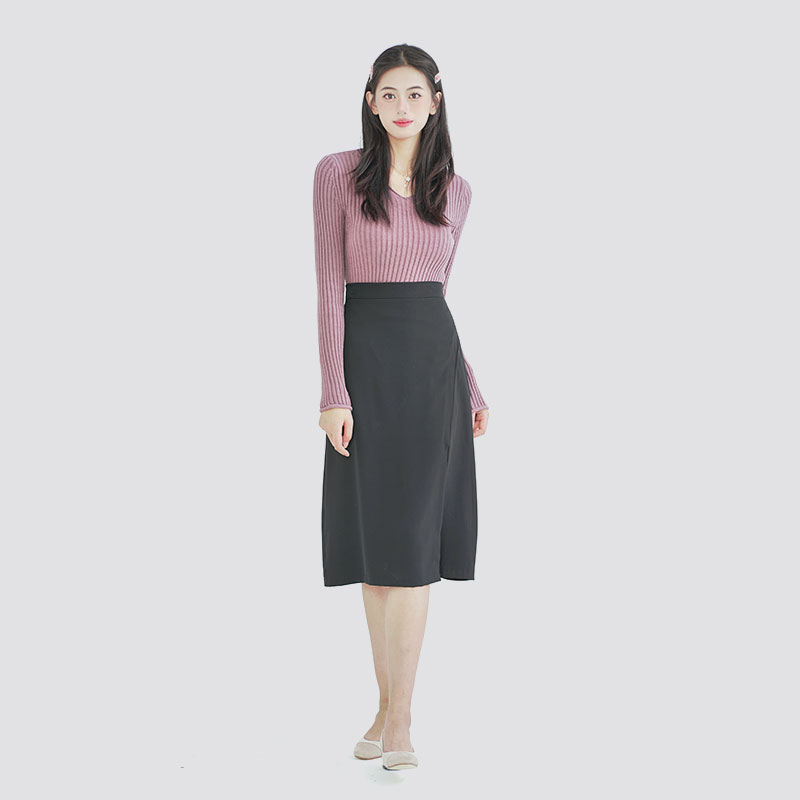What are the benefits and drawbacks of using blended yarns in knitted pullovers?
Blended yarns, which combine two or more different types of fibers, are frequently used in knitted pullovers for their ability to enhance the performance and aesthetics of the final product. Here’s a detailed exploration of the benefits and drawbacks of using blended yarns in knitted pullovers:
Benefits
Enhanced Comfort:
Softness and Smoothness: Blending natural fibers like cotton or wool with synthetic fibers such as polyester can create a balance between softness and durability. This enhances the comfort of pullovers.
Moisture Management: Blended yarns can combine the moisture-wicking properties of synthetic fibers with the absorbent qualities of natural fibers, providing a comfortable wear experience.
Improved Durability:
Strength and Flexibility: Combining fibers like nylon or polyester with wool can result in a yarn that is stronger and more flexible, reducing the likelihood of wear and tear over time.
Resistance to Pilling: Blended yarns can be engineered to reduce pilling, which is a common issue in pure wool or cotton garments.
Better Performance:
Thermal Regulation: Blends that include wool and synthetic fibers can provide better insulation and breathability, making them suitable for a wider range of temperatures.
Elasticity and Shape Retention: Adding synthetic fibers like elastane to natural fibers can improve the stretch and recovery of the garment, helping it retain its shape after wear and washing.
Cost Efficiency:
Economical Production: Blending less expensive synthetic fibers with natural fibers can reduce the overall cost of the yarn, making the final product more affordable without compromising too much on quality.
Reduced Material Costs: The use of blends can also reduce dependency on expensive natural fibers, lowering material costs.
Aesthetic Variety:
Color and Texture: Blended yarns can achieve unique colors, patterns, and textures that are difficult to replicate with single-fiber yarns. This enhances the visual appeal and design versatility of pullovers.
Fashion Flexibility: The variety of blended yarns available allows for a wide range of fashion options, from sleek and modern looks to cozy and traditional styles.
Functional Properties:
Special Features: Blended yarns can be engineered to have specific properties like UV resistance, antibacterial qualities, or flame retardancy, which are beneficial for certain applications and environments.
Enhanced Dyeability: Blending fibers can improve dye uptake and retention, resulting in vibrant and long-lasting colors.

Drawbacks
Complex Care Requirements:
Washing and Maintenance: Blended fabrics may have specific care instructions that can be more complex than those for single-fiber garments, such as needing to be washed in cold water or laid flat to dry to avoid damage.
Sensitivity to Heat: Some synthetic fibers in blends are sensitive to high temperatures, making them unsuitable for tumble drying or ironing, which can be inconvenient.
Inconsistent Performance:
Fiber Imbalance: If not well blended, the different fibers may perform inconsistently, leading to issues like uneven wear, reduced comfort, or aesthetic anomalies.
Variable Shrinkage: Different fibers in a blend may react differently to washing, potentially leading to shrinkage or distortion of the garment’s shape.
Environmental Concerns:
Sustainability Issues: Blended yarns that include synthetic fibers are often less eco-friendly, as they can contribute to microplastic pollution and are typically less biodegradable than natural fibers.
Recycling Challenges: Blended fabrics can be more difficult to recycle than single-fiber fabrics due to the need to separate the different materials.
Potential Allergens:
Skin Sensitivity: Some individuals may have allergic reactions to specific synthetic fibers or the chemicals used in their production, leading to discomfort or irritation.
Contact Dermatitis: Blended yarns with certain synthetic fibers can sometimes cause contact dermatitis in sensitive individuals.
Blended yarns offer a myriad of benefits for knitted pullovers, from improved comfort and durability to cost efficiency and aesthetic variety. However, they also come with drawbacks like complex care requirements, potential environmental impacts, and sometimes inconsistent performance. The choice to use blended yarns should be based on a careful consideration of these factors, balancing the desired qualities of the final product with practical and ethical considerations.

 English
English 中文简体
中文简体 Español
Español












